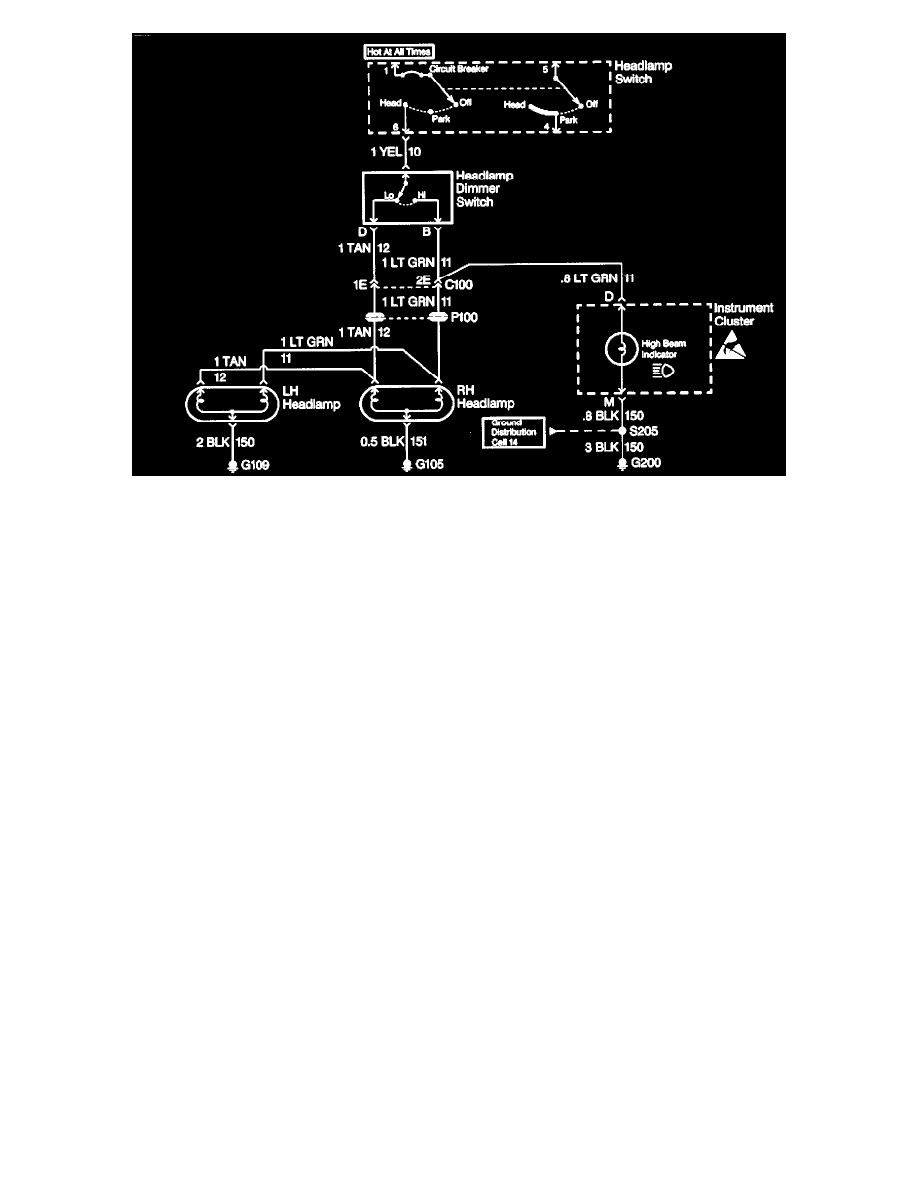Hombre XS Space Cab L4-2.2L CPC (1997)

Step 2: Read the Headlamps Electrical Schematic.
This is the step that will save time and labor. Remember, it is essential to understand how a circuit should work before trying to figure out why it doesn't.
After you understand how the circuit should operate, read the schematic again, this time keeping in mind what you have learned by operating the circuit.
Since both Low beams work, you know that the Headlamp Switch, the YEL wire, the Low contacts of the Headlamp Dimmer Switch, terminal "1E" of
C100, the TAN wires, and grounds G105 and G109 are all good.
Furthermore, since you saw that the High Beam Indicator came on when the Headlamp Dimmer Switch was moved to "High," you know that the High
contacts of the Headlamp Dimmer Switch and the LT GRN wire between the Headlamp Dimmer Switch and C100 are good.
At this point, you could test for voltage at the RH Headlamp with the Headlamp Dimmer Switch in "High." However, it is extremely unlikely that the
High beam filaments have burned out in both headlamps, or that both headlamp connections are bad. The cause must be a bad connection at C100, or a
break in the LT GRN wire between C100 and the RH Headlamp.
You have quickly narrowed the possible causes down to one specific area, and have done absolutely no work on the vehicle itself.
Step 3: Find the Fault and Repair it
Using the Component Location Table and the corresponding figure, you can quickly find C100 and the LT GRN wire, locate the exact trouble point and
make the repair.
Step 4: Check the Repair by Performing a System Check on the Head lamps Circuit
This, of course, means making sure that both High beams, both Low beams, and the High Beam Indicator are all working.
Now suppose that the symptoms were different. You may have operated the Headlamps and found that the Low beams were working, but neither the
High beams nor the High Beam Indicator were working. Looking at the schematic, you might conclude that it is unlikely that both High beam filaments
and the High Beam Indicator have all burned out at once. The cause is probably the Headlamp Dimmer Switch or its connector.
Checking Terminal Contact
When diagnosing an electrical system that utilizes Metri-Pack 150/280/480/630 series terminals, it is important to check terminal contact between a
connector and component, or between in-line connectors, before replacing a suspect component. Refer to J 38125-A Terminal Repair Kit or J 38125-4
Instruction Manual for terminal identification.
Frequently, diagnostics lead to a step that reads: "Check for poor connection." Mating terminals must be inspected to assure good terminal contact. A
poor connection between the male and female terminal at a connector may be the result of contamination or deformation.
Contamination is caused by the connector halves being improperly connected, a missing or damaged connector seal, or damage to the connector itself,
exposing the terminals to moisture and dirt. Contamination, usually in underhood or underbody connectors, leads to terminal corrosion, causing an open
circuit or intermittently open circuit.
